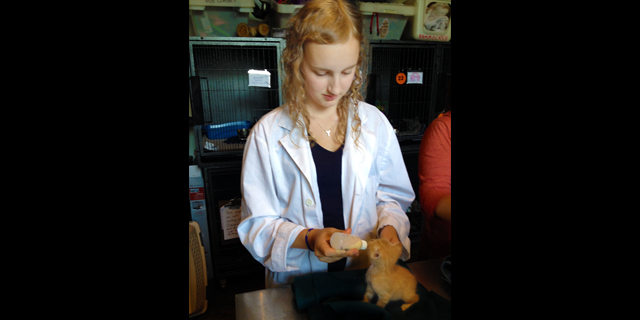
I’ve volunteered at a no-kill animal rescue, Santé D’or, for almost seven years now. Santé D’or translates to golden health, signifying that every animal in their facility receives excellent care and the assurance that if adoptive families ever need to relinquish their adopted pet(s) they can always return them to Santé D’Or. Santé D’Or also requires each adoptive family to have a home check before they’re able to take an animal home, and provides low cost spaying and neutering. Unfortunately, Santé D’Or almost always runs at full capacity, so animals arriving at their doorstep might be denied admission. In addition, while their home check requirement ensures that animals entrusted to its care will end up in safe, loving homes for the rest of their lives, it adds time and expense to the adoption process, which in turn slows down a streamlined adoption process and discourages excellent adoptive families from taking in rescued animals.
In September, The L.A. Times stated that Los Angeles city animal shelters took in approximately 57,225 animals, primarily consisting of cats and dogs, during the last fiscal year. Heartbreakingly, 14,084 of them had to be euthanized due to overcrowding or disease. As a result of these animals being euthanized, there have been efforts afoot to make Los Angeles shelters no-kill, meaning animals would no longer risk being euthanized during their stay at city shelters. Private organizations such as Best Friends Animal Society are stepping in to help eliminate this dismal statistic by taking over the animals’ immediate care.
With the aim of creating a no-kill policy in Los Angeles, finding a proper home for each animal has proven challenging. Individuals and families can foster lost and/or abandoned animals to ease overcrowding at shelters and prevent otherwise healthy animals from being mixed into a population of animals that may be sick or neglected. To do this, private animal shelters rescue animals from city shelters and adopt out animals entrusted in their care or, lacking space to care for them in house, they must send them to a foster home until permanent owners can be found. I have witnessed many successful foster families even adopt their pets, after growing attached to them.
Other options to help eliminate the practice of euthanizing animals include holding adoption days inside and outside pet stores, which offer low cost holiday adoption fee, and/or sponsoring No Kill Los Angeles animal fairs, which I have attended before at the La Brea Tar Pits. When a variety of animal rescue organizations are linked together through N.K.L.A. (No Kill Los Angeles) it makes the adoption process quicker and far less bureaucratic for prospective families. The downside, however, is that it can also put animals at risk if they land in unfit or temporary homes. These are animals that have already suffered neglect or loss, which raises the question: is aiming for a zero euthanized policy a realistic goal? Or should we allow the city to euthanize some animals in order to give the best possible care to those animals that can be saved? This might mean euthanizing perfectly healthy animals because the city does not have the resources or capability of sheltering all of the animals in its care.
While the no-kill goal is humane, it is not an easily attainable given the huge number of animals living on our city streets. We must work harder to protect animals living in our midst, as well as spay and neuter them, because protecting the most vulnerable members of our communities reflects the true mark of a civilized society. p







